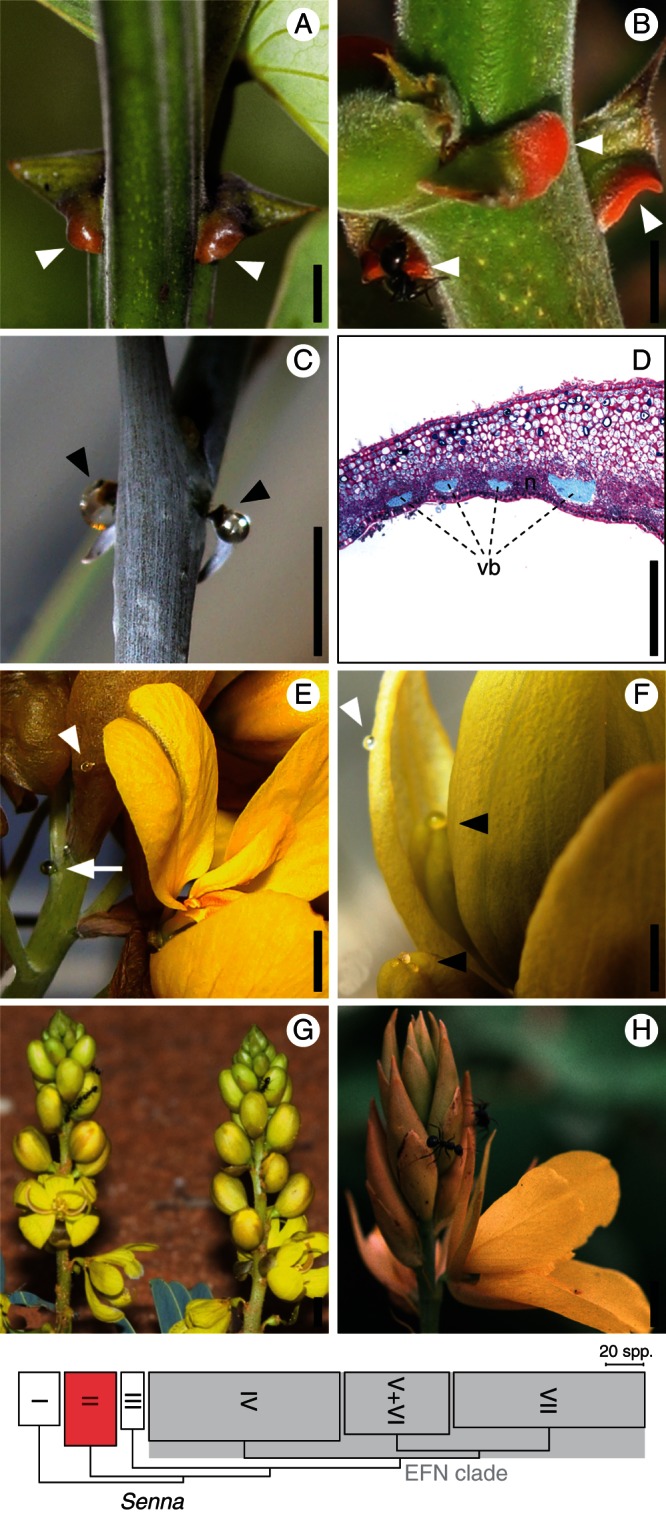Fig. 1.

Diversity of EFNs in Senna – clade II. The phylogenetic position and size of clade II with respect to the other clades is illustrated in the Senna cladogram at the bottom of the figure (adapted from Marazzi and Sanderson, 2010). (A–C) EFNs on lobes of partly modified, discoloured stipules (arrowheads). (D) Cross-section of a modified, stipule lobe (ventral side downward); the nectariferous tissue (n) is the darker, cell-denser area in between and around the vascular bundles (vb). (E, F) EFNs on various parts of the inflorescence: putative bract scar at the base of pedicels (arrow) and dorsal side of bracts and sepals (with and black arrowheads, respectively). (G, H) Ants suggesting presence of EFNs on sepals and bracts. (A) S. alata. (B, D) S. martiana (photo courtesy of L. Paganucci de Queiroz). (C, E–F) S. pleurocarpa. (G) S. italica (photo courtesy of A. Weaving/Ardea.com). (H) S. paradyctyon. Scale bars (indicative): (A–C, E–G) = 5 mm; (D) = 1 mm.
